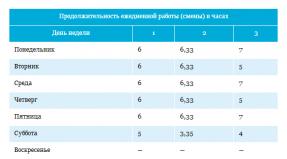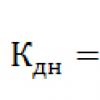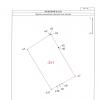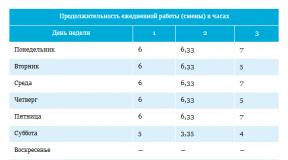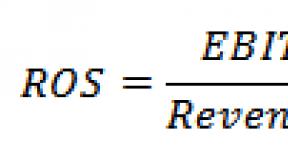At 6 days. Working day and working week in the USSR and Russia. dossier. What does the Labor Code of the Russian Federation say about non-working days?
It is no secret that some employers, instead of the usual five working days, establish a six-day working week for the team. For this reason, many are interested in a number of questions:
- What are the standard hours per week with six working days;
- How is processing paid?
- What should be the duration of rest with such a work schedule;
- How are vacations calculated for a six-day work schedule?
- How to calculate working hours;
- How to set a six-day work schedule in an organization.
The most common schedule options are either a 5-day work week or shift work (every three days). In both cases, you should be guided by the generally accepted standard of working hours per week - no more than 40 hours. The same applies to those who work a “six-day shift”, and all hours that the employee worked above the norm must be paid at an increased rate, even if such schedule features were specified in advance in the employment contract.
Below we consider the situation when the employer is obliged to make additional payments for overtime work:
Nikanorova S.I. works in an organization where the work schedule is 6 days a week, day off is Sunday. Her working day lasts from 09:00. 00 min. until 5 p.m. 00 min. On Saturdays she works from 10 o'clock. 00 min. until 2 p.m. 00 min. Thus, she completes her weekly hours (40 hours) on Friday. Her work hours on Saturday are considered overtime, despite the fact that the organization’s local documents indicate the working hours.
In accordance with the Labor Code of the Russian Federation, she should be paid monthly additional payments for work above the norm, but the manager does not do this. Nikanorova S.I. appealed to the Trade Union with a complaint about the lack of additional payments, and after an inspection, the body determined that the actions of the manager Nikanorova S.I. are illegal.
Thus, all hours exceeding the weekly norm (40 hours) are overtime and are subject to mandatory compensation at a higher rate than scheduled work time on weekdays.
What regulatory documents and laws should employees working on a six-day week and employers planning to establish such a schedule be guided by:
- “Production calendar for 2017”;
- Art. 100 of the Labor Code of the Russian Federation on working hours;
- Art. 91 of the Labor Code of the Russian Federation on normal working hours;
- Art. 111 of the Labor Code of the Russian Federation on days off;
- Art. 152 of the Labor Code of the Russian Federation on overtime work.
Is it possible to establish a six-day work week with one day off and how to do this?
The legislation does not make any prohibitions regarding the formation of work schedules in organizations: managers can establish both five-day or shift work schedules, as well as irregular work schedules. However, it should be remembered that, regardless of the schedule, there is only one standard working hours per week - 40 hours. The rest of the time worked on weekends is paid at double the rate.
To prevent errors in calculations, each company must keep a time sheet, which will indicate all employees and the days on which they worked or rested. At the end of the reporting period, this document is submitted to the accounting department, and on the basis of it, wages are calculated for each employee.
If the enterprise was organized only recently, then the working hours must be reflected in internal documents:
- Collective agreement;
- Employment contracts (when concluded with employees);
- Internal labor regulations.
If an organization plans to switch from a five- to six-day work schedule, it will have to either re-sign employment contracts or draw up additional agreements to them. In any case, all documents must be properly executed and contain the necessary information, otherwise it will be considered a violation of labor laws.
Thus, when deciding to switch to a six-day work week, you need to consider several nuances:
- Changes must be made only with the written consent of all employees (Article 72 of the Labor Code of the Russian Federation). The only exceptions are cases when it is impossible to maintain the previous work schedule due to technical or organizational reasons: then only a unilateral decision of the manager is sufficient (Article 74 of the Labor Code of the Russian Federation);
- The employer is obliged to notify his subordinates no later than 2 months before the transfer to a new work mode, providing them with a notice to sign;
- Additional agreements are concluded with employees who agree to the new schedule. Those who do not agree must be offered suitable available vacancies, and in their absence or refusal, employees are subject to dismissal under clause 7, part 1, art. 77 of the Labor Code of the Russian Federation, and they will have to pay severance pay equal to two weeks’ average earnings.
Important! The duration of continuous weekly rest should not be less than 42 hours with a six-day work schedule. Let's look at a correct example of creating a daily routine:
Davydova O.M. works as an accountant at a company. Her working days from Monday to Friday last from 08:00. 00 min. until 16 o'clock 00 min. On Saturday she works from 08:00. 00 min. until 12 o'clock 00 min. Thus, she has 44 hours left to rest until Monday, and the employer does not violate the law.
What if the organization has a five-day schedule, but employees periodically have to go to work on their days off? In this case, it is not necessary to draw up an additional agreement to the employment contract, because this is not a permanent mode of work, but overtime must be paid in any case. If desired, employees can use another option - ask their manager to provide time off, which is calculated at double the number of overtime hours.
How to calculate the standard working time for a six-day work week with one day off: rules
There should not be any particular difficulties in calculating here - just remember that all time exceeding 40 hours per week must be paid accordingly. For the calculation, you should use a working time sheet, and the maximum duration of overtime in one day cannot be more than 5 hours, even with additional payment. What could be an exception:
- The employee remains to work in the organization on his day off for more than 5 hours on his own initiative;
- Exceeding the overtime norm of 5 hours in one day off is caused by production necessity, but this must be documented in case of inspection.
If the organization has officially established a five-day workday, but the employee had to go on his day off, he can be compensated by time off based on his application, which must contain the following information:
- Name of the enterprise, full name directors;
- The bottom line: please provide another day of rest indicating a specific date for going to work on a day off (the date is also indicated);
- Date of compilation and signature of the employee requesting time off.
In some organizations, there is a practice according to which, if overtime is systematically allowed, employees are given time off without their applications. This is permitted by law, but such a condition must be reflected in a collective or labor agreement, or in the internal regulations of the enterprise.
As for vacations, the general calculation procedure is used here, regardless of what daily routine is established in the company. Their duration does not depend on the number of hours worked and must be at least 28 calendar days. An exception is the category of employees who are granted additional leave: in this case, the duration of rest may be greater than the norm regulated by the Labor Code of the Russian Federation.
The most important nuance when establishing a six-day work week is the correct execution of all documents reflecting the work schedule. If an employee was initially employed on a five-day workday, and after some time he had to switch to a six-day workday, and the overtime is not paid, he has the right to complain to the Trade Union or the State Labor Safety Inspectorate, but collective complaints are most effective.
TASS DOSSIER. October 29 (November 11), 1917 By decree of the Council of People's Commissars (SNK), an 8-hour working day was established in Russia (instead of 9-10 hourly, as was previously the case) and a 48-hour working week was introduced with six working days and one day off. In jobs that were particularly hazardous to health, reduced working hours were provided. On December 9, 1918, the Labor Code of the RSFSR was adopted, which consolidated these provisions.
From January 2, 1929 to October 1, 1933, in accordance with the resolution of the Central Executive Committee and the Council of People's Commissars, a gradual transition to a 7-hour working day was carried out. The working week was 42 hours.
August 26, 1929 By decree of the Council of People's Commissars of the USSR "On the transition to continuous production in enterprises and institutions of the USSR" a new time calendar was introduced, in which the week consisted of five days: four working days of 7 hours each, the fifth was a day off.
In November 1931 The Council of People's Commissars of the USSR adopted a resolution in which it allowed the People's Commissariats and other institutions to switch to a six-day calendar week, in which the 6th, 12th, 18th, 24th and 30th of each month, as well as March 1st, were non-working.
June 27, 1940 The decree of the Presidium of the Supreme Soviet of the USSR came into force on the transition to an 8-hour working day with a “regular” working week according to the Gregorian calendar (6 working days, Sunday is a day off). The working week was 48 hours.
June 26, 1941 The Presidium of the Supreme Soviet of the USSR issued a decree “On the working hours of workers and employees in wartime,” in accordance with which mandatory overtime work from 1 to 3 hours a day was introduced and vacations were abolished. These wartime measures were canceled by decree of the Presidium of the Supreme Soviet of the USSR on June 30, 1945.
At the end of the post-war reconstruction period in 1956-1960 The working day in the USSR was gradually (by sector of the national economy) again reduced to 7 hours with a six-day working week (Sunday is a day off), and the working week to 42 hours.
At the XXIII Congress of the CPSU ( March 29 – April 8, 1966) it was decided to switch to a five-day work week with two days off (Saturday and Sunday). In March 1967, a series of decrees and resolutions of the Presidium of the Supreme Soviet and the Central Committee of the CPSU introduced a standard “five-day week” with an 8-hour working day in the USSR. In general education schools, higher and secondary specialized educational institutions, a six-day working week with a 7-hour working day has been preserved. Thus, the working week did not exceed 42 hours.
December 9, 1971 The Supreme Council of the RSFSR adopted a new Labor Code (LLC), according to which working hours could not exceed 41 hours. The USSR Constitution (Article 41), adopted on October 7, 1977, legitimized this norm.
In Russia the law dated April 19, 1991“On increasing social guarantees for workers” reduced working hours to 40 hours a week. On September 25, 1992, this norm was enshrined in the Labor Code of the Russian Federation. The working week still exists in this form in Russia.
If the employer violates the deadline for paying vacation pay and the labor inspectorate becomes aware of this, the employer faces a fine in the amount (Part 6 of Article 5.27 of the Code of Administrative Offenses of the Russian Federation): - from 30,000 rubles. up to 50,000 rub. — for the organization; — from 10,000 rub. up to 20,000 rub. - for its officials; — from 1000 rub. up to 5000 rub. - for an individual entrepreneur. It is worth noting that if the employer has previously been punished for this violation, then the amount of the fine will be greater (Part 7 of Article 5.27 of the Code of Administrative Offenses of the Russian Federation). Vacation pay and personal income tax The employer (as a tax agent) must withhold personal income tax from the vacation pay accrued to the employee and transfer it to the budget. Personal income tax on vacation pay is paid no later than the last day of the month in which these vacation pay were paid to the employee (clause 6 of Article 226 of the Tax Code of the Russian Federation). Vacation and insurance contributions As a general rule, vacation pay is subject to not only personal income tax, but also insurance contributions (clause 1, clause 1, article 420 of the Tax Code of the Russian Federation, article 20.1 of the Federal Law of July 24, 1998 N 125-FZ).
Online magazine for accountants
Vacation calculator on-line Dear visitors of our site! We present to your attention a new on-line service - “On-line Vacation Calculator”. This program will allow you to easily calculate how many vacation days an employee has accumulated as of a certain date, and how many days need to be taken to calculate vacation compensation upon dismissal.
Important
Unlike many similar utilities, our service allows you to take into account various periods that are not included in the length of leave, for example, periods of parental leave and unpaid leave, time of absence from work without a good reason. A complete list of all legislative norms used in the program algorithm is indicated in the publication Legislative norms taken into account in the Vacation Calculator program in the Questions and Answers section.
Enjoy using it.
Production calendar for 2018 with a six-day work week
Attention
If the enterprise was organized only recently, then the working hours must be reflected in internal documents:
- Collective agreement;
- Employment contracts (when concluded with employees);
- Internal labor regulations.
If an organization plans to switch from a five- to six-day work schedule, it will have to either re-sign employment contracts or draw up additional agreements to them. In any case, all documents must be properly executed and contain the necessary information, otherwise it will be considered a violation of labor laws.
Thus, when deciding to switch to a six-day work week, you need to consider several nuances:
- Changes must be made only with the written consent of all employees (Article 72 of the Labor Code of the Russian Federation).
Home → Accounting calculators Today April 27, 2018, 11:55 pm Vacation pay calculator in 2018 Vacation pay calculator in 2018 is an online calculator, using which you can easily calculate the amount of vacation pay in any situation when the employee’s vacation is set in calendar days . The vacation pay calculator calculates according to the rules of Art.
139 of the Labor Code of the Russian Federation and the Regulations on the specifics of the procedure for calculating average wages, approved. Decree of the Government of the Russian Federation dated December 24, 2007 No. 922.
If during the pay period the employee’s salary was increased or a bonus was paid, our calculator will help calculate vacation pay online, taking these nuances into account.
Vacation pay calculator in 2018
Retired? Don’t forget to apply for tax benefits. The whole Russian essence: come to some country, throw in pieces of paper that for some reason you consider d... “Personal accounting.” How to pay better when traveling around Europe: personal experience Ibrisami, you wrote:11.
An entrepreneur is engaged in educational activities, or any friend... TOP 13 mistakes of entrepreneurs in LLCs and individual entrepreneurs. It is also illegal to demand contacts of former bosses; the applicant does not have the right to disclose them...
The employer does not have the right to disclose the personal data of employees. Sorry, I have a question: how should courier services that deliver goods work... A modern online cash register is an assistant for business 11. An entrepreneur is engaged in educational activities, or any other activity based on...
Production calendar 2018 with a six-day work week
Info
For these purposes, Decree of the Government of the Russian Federation dated October 14, 2017 No. 1250 “On the transfer of weekends in 2018” provides for the following shift of weekends: Thus, the following weekends have been postponed in 2018:
- Saturday 6 January to Friday 9 March;
- Sunday 7 January to Wednesday 2 May.
- Also, to optimize rest time, weekends have been swapped with working days (Saturdays will be working days, and Mondays will be days off):
- Saturday 28 April to Monday 30 April;
- Saturday 9 June to Monday 11 June;
- Saturday 29 December to Monday 31 December.
One holiday - May 9, 2018, in honor of Victory Day, we will have a rest during the week. In a six-day work week, Saturdays are not days off, which means that these transfers are not provided for a six-day work week.
It is impossible to give a resigning employee a copy of SZV-M. According to the law on personal accounting, when dismissing an employee, the employer is obliged to give him copies of personalized reports (in particular, SZV-M and SZV-STAZH). However, these reporting forms are list-based, i.e. contain information about all employees.
This means transferring a copy of such a report to one employee means disclosing the personal data of other employees.< … Компенсация за неиспользованный отпуск: десять с половиной месяцев идут за год При увольнении сотрудника, проработавшего в организации 11 месяцев, компенсацию за неиспользованный отпуск ему нужно выплатить как за полный рабочий год (п.28 Правил, утв.
NKT USSR 04/30/1930 No. 169). But sometimes these 11 months are not so spent.< …
Let's consider the correct example of creating a daily routine: Davydova O.M. works as an accountant at a company. Her working days from Monday to Friday last from 08:00. 00 min. until 16 o'clock 00 min. On Saturday she works from 08:00. 00 min. until 12 o'clock 00 min. Thus, she has 44 hours left to rest until Monday, and the employer does not violate the law. What if the organization has a five-day schedule, but employees periodically have to go to work on their days off? In this case, it is not necessary to draw up an additional agreement to the employment contract, because this is not a permanent mode of work, but overtime must be paid in any case. If desired, employees can use another option - ask their manager to provide time off, which is calculated at double the number of overtime hours.
The only exceptions are cases when it is impossible to maintain the previous work schedule due to technical or organizational reasons: then only a unilateral decision of the manager is sufficient (Article 74 of the Labor Code of the Russian Federation);
- The employer is obliged to notify his subordinates no later than 2 months before the transfer to a new work mode, providing them with a notice to sign;
- Additional agreements are concluded with employees who agree to the new schedule. Those who do not agree must be offered suitable available vacancies, and in their absence or refusal, employees are subject to dismissal under clause 7, part 1, art. 77 of the Labor Code of the Russian Federation, and they will have to pay severance pay equal to two weeks’ average earnings.
Important! The duration of continuous weekly rest should not be less than 42 hours with a six-day work schedule.
Vacation start date Vacation end date Vacation duration 26 calendar days Calculation period 12 months 11 months 10 months 9 months 8 months 7 months 6 months 5 months 4 months 3 months 2 months 1 month Calculation period 12 months from April 2017 to March 2018 During the billing period the employee: worked for some time did not work a single day was hired Date of hire NEXT STEP Calculation of vacation pay Vacation pay is calculated using the following formula: In general, the average daily earnings are calculated as follows: In a separate material, you can read about which period is recognized as the calculation period, as well as what payments of the billing period are taken into account when calculating the amount of average daily earnings. Deadlines for payment of vacation pay The employer must pay vacation pay to the employee no later than three calendar days before the start of the vacation (Article 136 of the Labor Code of the Russian Federation).
Production calendar for 2018 with a “six-day work week” Here is the production calendar for 2018 with a six-day work week: Next, we present the quarterly production calendar with a six-day work week (with weekends and holidays). Taking into account all the transfers, the production calendar for a six-day work week will look like this (pre-holiday days, when the working day is reduced by 1 hour, are marked with an asterisk*): Download the 2018 production calendar for a six-day work week.
Standards of working time for a “six-day week” In accordance with Article 100 of the Labor Code of the Russian Federation, a number of organizations and enterprises establish a six-day working week with one day off for their employees. The general day off is Sunday (Article 111 of the Labor Code of the Russian Federation).
- The bottom line: please provide another day of rest indicating a specific date for going to work on a day off (the date is also indicated);
- Date of compilation and signature of the employee requesting time off.
In some organizations, there is a practice according to which, if overtime is systematically allowed, employees are given time off without their applications. This is permitted by law, but such a condition must be reflected in a collective or labor agreement, or in the internal regulations of the enterprise. As for vacations, the general calculation procedure is used here, regardless of what daily routine is established in the company. Their duration does not depend on the number of hours worked and must be at least 28 calendar days.
- Current labor legislation allows an employer (organization or individual entrepreneur) to establish several working week schedules for its employees:
✔ 5-day work week with two days off (usually Saturday and Sunday) lasting no more than 40 hours;
✔ 6-day work week with one day off (usually Sunday) lasting no more than 40 hours;
✔ working week with a rotating schedule of days off;
✔ part-time work.
The basis for establishing a 6-day working week
Establishing a six-day working week is possible legally.
A 6-day working week can be established for all employees of an organization or individual entrepreneur, as well as for certain categories or positions of employees in connection with a particular production need. Features of the work and rest regime of employees, including the length of the working week, are prescribed in the employer’s internal labor regulations.
For micro-enterprises, a 6-day working week is prescribed in employment contracts with each employee.
The need for a 6-day work week.
A six-day working week is most often established in shops, public catering outlets, medical institutions and educational institutions, and so on, i.e. in places where the population is primarily provided with services.
As a rule, service establishments work daily for 10-12 hours, i.e. beyond the normal working hours of the employee, because Current legislation establishes an 8-hour working day as the maximum length of a person's working time.
And although it is possible to involve employees in overtime work, such involvement is permissible only with the consent of the employee himself, subject to increased payment for overtime work at the rate of one and a half times the rate for the first two hours of overtime work and double the rate thereafter. At the same time, the duration of overtime work itself should not exceed 4 hours for two days in a row and 120 hours for the entire year.
The question is, how, in this case, can we ensure the daily operation of the enterprise for, say, 12 hours?
The optimal solution in this situation would be to organize shift work for workers for 6-7 hours a day during a 6-day work week.
With a 6-day work week, the length of the work week can be 40 hours, i.e. normal duration (7 hours for 5 days, on the day before a day off - 5 hours), and shortened duration (35-hour or 24-hour work week).


Features of a 6-day work week
Please note that during a six-day work week, on the eve of the weekend, the employee’s work hours should not exceed 5 hours.
If for some reason a day off on Sunday cannot be provided, then the employee has the right to choose any other day during the working week for rest. The duration of continuous weekly rest should not be less than 42 hours.
Some rules inherent in a five-day work week also apply to a six-day work week.
For example, with regard to vacations for employees with a six-day period, in this case it is calculated in the same way as for a five-day period. After all, the number of vacation days is not related to the number of hours worked and should be 28 days annually (unless the employees belong to the category of employees with extended vacations).
Read also...
- Gobu "Physical and Technical Lyceum" named after P.L.Kapitsa. Courses at the Physics and Technology Lyceum Electronic diary of the State Budgetary Educational Institution Physics and Technology Lyceum
- Features of the territory surveying project Gradkodeks territory planning project
- Domestic microelectronics: no demand, no foreign investment, populated by imported chips Three years ago I was a big skeptic about creating production at Micron
- What should be the standard hours for a six-day work week?
